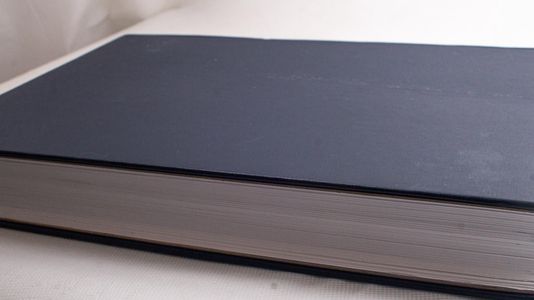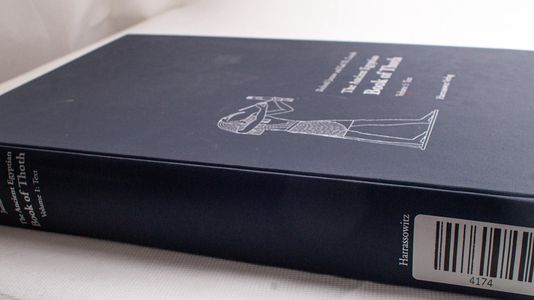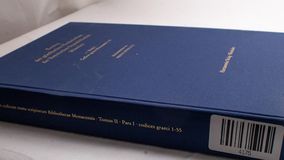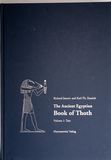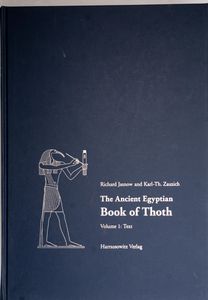
The Ancient Egyptian Book of Thoth: A Demotic Discourse on Knowledge and Pendant to the Classical Hermetica - Karl-Theodor Zauzich, Richard Jasnow, Karl Th Zauzich
Netto: 747,66 €800€
inkl. MwSt. zzgl. Versand
Bearbeitungszeit: 3 Werktage
Sofort lieferbar (auf Lager)
1x Stück verfügbar
Buchzusammenfassung:
The composition, which the editors entitle the Book of Thoth, is preserved on over forty Graeco-Roman Period papyri from collections in Berlin, Copenhagen, Florence, New Haven, Paris, and Vienna. The central witness is a papyrus of fifteen columns in the Berlin Museum. Written almost entirely in the Demotic script, the Book of Thoth is probably the product of scribes of the House of Life, the temple scriptorium. It comprises largely a dialogue between a deity, usually called He-who-praises-knowledge (presumably Thoth himself) and a mortal, He-who-loves-knowledge. The work covers such topics as the scribal craft, sacred geography, the underworld, wisdom, prophecy, animal knowledge, and temple ritual. Particularly remarkable is one section (the Vulture Text) in which each of the 42 nomes of Egypt is identified with a vulture. The language is poetic the lines are often clearly organized into verses. The subject-matter, dialogue structure, and striking phraseology raise many issues of scholarly interest especially intriguing are the possible connections between this Egyptian work, in which Thoth is called thrice-great, and the classical Hermetic Corpus, in which Hermes Trismegistos plays the key role. The first volume comprises interpretative essays, discussion of specific points such as the manuscript tradition, script, and language. The core of the publication is the transliteration of the Demotic text, translation, and commentary. A consecutive translation, glossary, bibliography, and indices conclude the first volume. The second volume contains photographs of the papyri, almost all of which reproduce their original size.
FAQ zum Buch
Das Buch Thoth ist ein vielfältiges Werk aus der späteisenzeitlichen ägyptischen Literatur, das Teil eines Prozesses der “Codifizierung von Wissen“ darstellt. Es vereint verschiedene literarische Gattungen und dient der Organisation und Weitergabe der kulturellen Kenntnisse der Zeit. Der Text wurde in Demotisch verfasst, enthält jedoch auch hieratische Elemente, und es existieren hieratische Versionen, wie ein Fragment aus dem 2. Jahrhundert n. Chr. zeigt. Dieses FAQ wurde mit KI erstellt, basierend auf der Quelle: S. 92, ISBN 9783447050821
Es gibt textuelle Varianten in den Papyri des Buches Thoth, wie die unterschiedlichen Schreibweisen von Partikeln und Präpositionen zeigen. Beispielsweise wird “hr“ in manchen Fällen als “h“ geschrieben, und es existieren archaische Präpositionen. Die Texte dokumentieren Variationen in der Orthografie und Verwendung dieser Elemente. Dieses FAQ wurde mit KI erstellt, basierend auf der Quelle: S. 117, ISBN 9783447050821
Der Text besagt, dass das Buch des Thoth vor allem für die Schreiberschaft interessant war und mit dem „Haus des Lebens“ verbunden war. Es diente möglicherweise der praktischen Ausbildung fortgeschrittener priestlicher Schreiber, da es Elemente der Initiation enthielt, wie das Wissen über heilige Terminologie und Symbole. Dieses FAQ wurde mit KI erstellt, basierend auf der Quelle: S. 94, ISBN 9783447050821
Die Schreiberkunst war im ägyptischen Totenkult von zentraler Bedeutung, da funeräre Texte die Wichtigkeit der schriftlichen Kenntnisse für den Verstorbenen betonten. Dies spiegelt sich auch in Werken wie dem “Buch des Thoth“ wider, das in einem funerären Kontext verfasst wurde. Dieses FAQ wurde mit KI erstellt, basierend auf der Quelle: S. 95, ISBN 9783447050821
Die Textpassage erklärt, dass die Variation zwischen einzelnen Buchstaben oder Lauten typisch für Manuskripte der römischen Periode ist. Beispiele dafür sind die Verwendung von “i“ anstelle von “r, b anstelle von w oder s anstelle von h, wie in den genannten Manuskripten gezeigt wird. Dieses FAQ wurde mit KI erstellt, basierend auf der Quelle: S. 109, ISBN 9783447050821
Die Vulture Text-Textpassagen beginnen fast jedes Mal mit den Worten „a vulture“, gefolgt von einem umstandlichen Clause, der das unbestimmte Subjekt „Vogel“ beschreibt, und einem zweiten umstandlichen Clause, der die Handlungen oder Natur seiner Jungen beschreibt. Dieses FAQ wurde mit KI erstellt, basierend auf der Quelle: S. 132, ISBN 9783447050821

